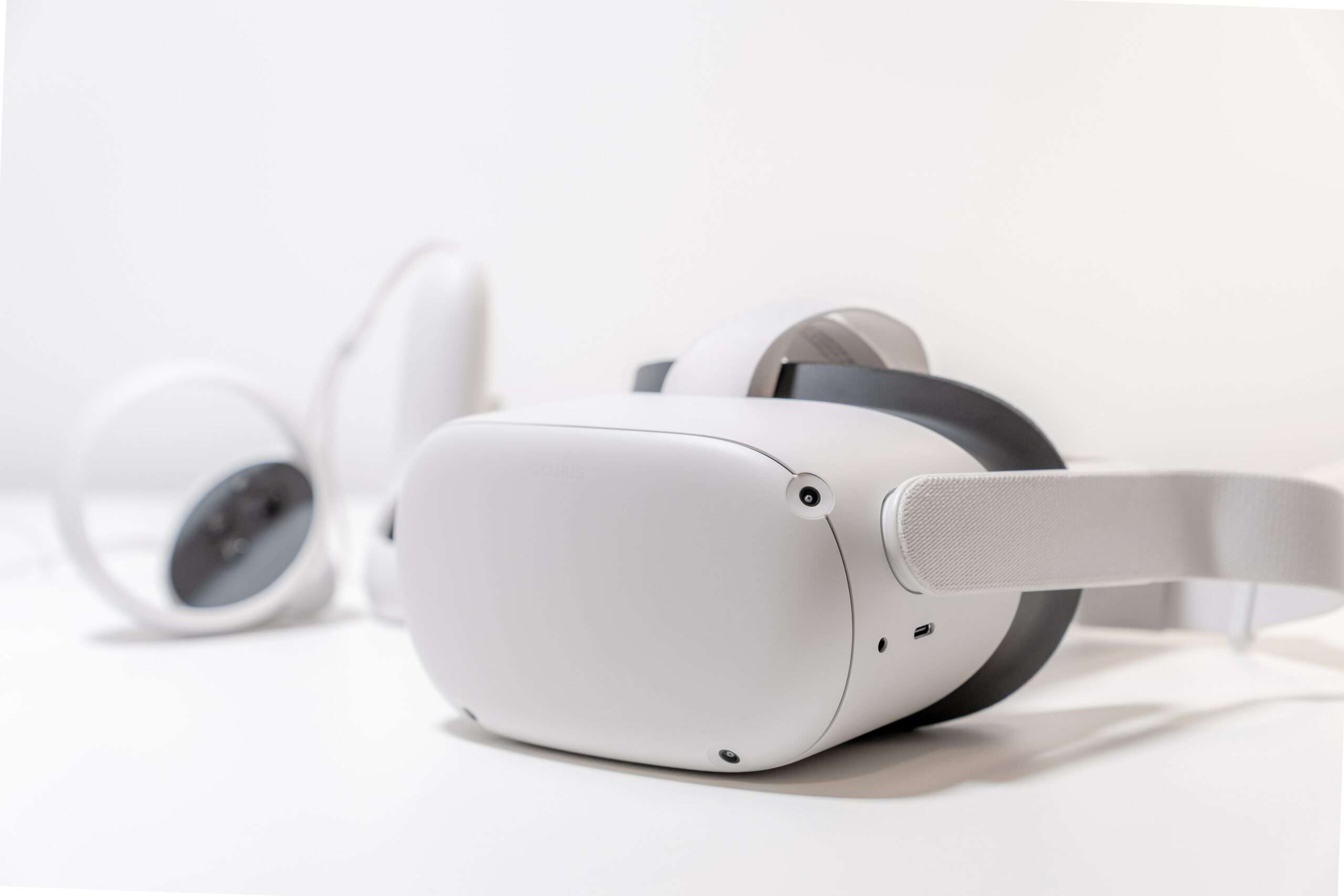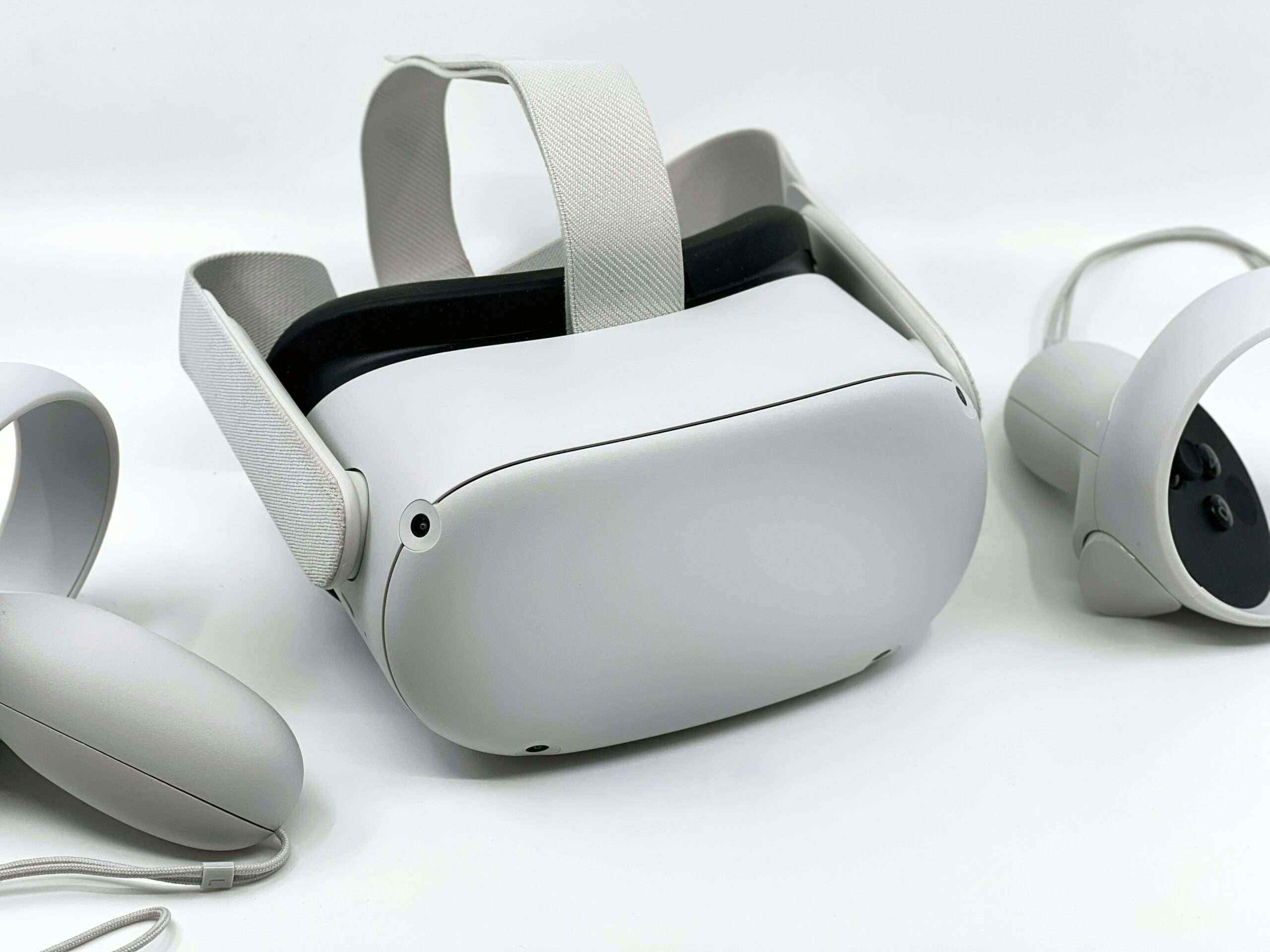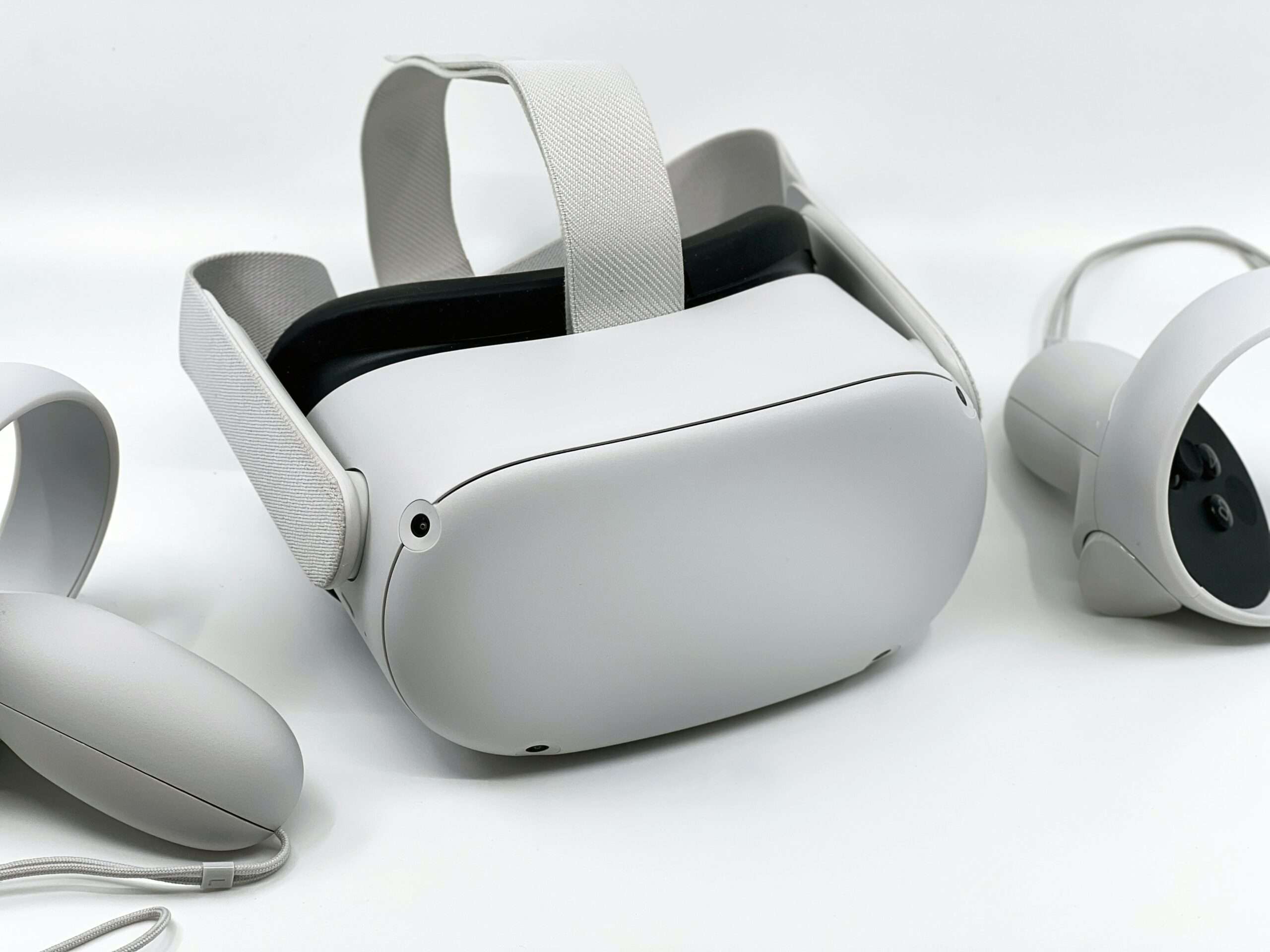To live up to its hype, the metaverse may require businesses to reorganize computation, connectivity, and software. This could help everyone.
Trends in gaming, remote work, and manufacturing continue to be transformed by new technologies, landing us on the doorstep of the metaverse—that woolly notion of reorganizing the internet and everything connected to it into more shared, simulated, and immersive experiences.1 The grand vision of a single, unified metaverse suggests that it could support large numbers of users, all wearing unique avatars personalized with digital goods, interacting, and transacting with each other through an endless kaleidoscope of hyper-realistic spaces. Industrial metaverses could envision digital twins of factories, cities, and supply chains, driven by millions of sensors and modeled in real-time high resolution. And while these scenarios are generating a lot of excitement, the internet architectures and the software that runs on them may not be prepared to support the kinds of computation, connectivity, and performance demanded by these use cases.
Metaverse capabilities for the consumer, enterprise, and industrial sectors face performance requirements: handling and processing large amounts of data and powering real-time capabilities that demand extremely fast responses. Whether it’s for human users interfacing with rich interactive experiences or for vast arrays of connected things generating and operating on data, networks need to be nimble and resilient, and computation should be instantly available and scalable. Leaders who are planning and developing metaverse capabilities should consider how these solutions may have unique requirements for networks, computation, and services. As more people and machines connect to them, these requirements could also grow and evolve.
Businesses planning metaverse strategies should not assume that the infrastructure needed to run them will just emerge. Nor should they assume that metaverse capabilities and experiences will scale effectively on existing technologies. Enabling the metaverse vision will likely require more investment, innovation, and collaboration between many ecosystem partners. But these investments could lay the foundation for the future of the internet and unlock greater innovation efficiency, and sustainability.
Metaverse Networks May be Different
Existing networks focus on providing bandwidth and download speeds, but metaverse experiences could require even higher performance. Latency—the time between a user input to a network and the resulting response—must be low. For interactive experiences, more than 50 milliseconds of delay can introduce lag and jitteriness, fouling the user experience.2 Fast-paced multiplayer games are an example, requiring very low latency to deliver gameplay that is smooth and seamlessly synchronized between players who may be scattered around the world. If one player interacts with an object or competitor, everyone else needs to see the change immediately. With more users, or greater distances between users, the synchronization overhead can get bigger.3 The same is true for a digital twin of a city or manufacturing floor.
The internet was designed to optimize download speeds, but networks have evolved to support the upload speeds needed for interactive experiences such as multiplayer video games.4 Because metaverse experiences involve many people—and machines—interacting with each other across networks, there can be a lot more upload activity. Networks may need faster upload speeds and lower latency.5 This could be considered analogous to electrical power grids, first designed to deliver power one way to consumers before off-grid power solutions made it possible to send excess power back into a grid that was not designed for it.
Fixed wireline fiber networks are seemingly well-positioned to support early metaverse requirements, but wireless networks may not be. While modern (5G/LTE) wireless networks can likely deliver adequate download speeds for consumer metaverse experiences, they may be challenged further to meet the upload and latency requirements and may be inadequate for enterprise and industrial uses. Even still, internet service providers (ISPs) and networks in buildings and homes can pose bottlenecks too. Simply streaming video into the home, for example, can suffer from poor Wi-Fi, too many connected devices in the house, and surges in evening traffic.
To better support early metaverse experiences and help enable future experiences at scale, telecom operators may need to build denser networks of wireless cell towers and adopt new wireless technologies that can recognize and respond dynamically to different data types and volumes, optimizing performance in real time for latency and bandwidth. With an uncertain future for augmented and virtual reality, delivering metaverse experiences to mobile devices may be key to enabling early growth. Additionally, developing digital twins and industrial metaverse capabilities could depend on 5G’s ability to manage many kinds of devices and data types.6 As metaverse applications advance, enabling the full value of 5G for homes and businesses could be critical.7
Business leaders may need to evaluate their existing networks for performance and scalability, as well as the costs of delivering metaverse experiences across provider networks. They could consider which kinds of networks might be best for a given solution or location, and which capabilities require very low latency performance. Partnering with telecom providers could help businesses to assess their connectivity needs more effectively. Those businesses seeking to deliver metaverse capabilities at scale may also need robust edge computing to support content and latency requirements to large numbers of users.
From Cloud to Edge, Metaverse Capabilities Seek Fast Computation
Operating on so much data and rendering realistic 3D experiences and simulations in real time can require a lot of computation. It is estimated that enabling metaverse capabilities could require a thousand-fold increase in computation beyond what today’s state-of-the-art semiconductor chips can deliver, which are nearing the end of Moore’s Law.8 Chip architectures are evolving and specializing, and more materials beyond silicon are beginning to address different computational and energetic needs.9
Metaverse capabilities like digital twins may also need much more immediate access to computing. Clouds and data centers offer large amounts of computation and storage but can be too far from where low-latency resources might be needed.10 Edge computing brings smaller amounts of storage and computation much closer to where it’s needed quickly.11 Where sensors meet the real world and users don headsets to access metaverse experiences, computation can be critical to support very low-latency operations or to secure and operate on data without sending it across the network. Additionally, edge appliances can be customized to support specific operations, like storing content for fast delivery or running AI to operate immediately on incoming data.12
Companies aiming to provide robust metaverse experiences may benefit from reassessing how they use computation and storage, from cloud to edge and out to user devices. To guarantee robust quality of service for such large amounts of data processing, each location across the network may need to handle different elements of the experience. This may take greater management and allocation of resources and could require metaverse applications to be designed differently.13 Companies developing metaverse capabilities should consider which parts of their software require very low latency and may need to run on edge appliances, and which parts of their services are less time-sensitive and can run in the cloud. This approach can require a more holistic view of networks, computation, and the software that runs on it all.
What Could it Take to Enable Metaverse Gaming and Digital Twins?
To deliver robust, low-latency performance, early metaverse experiences like cloud gaming have developed more distributed and orchestrated computing networks.14 Cloud gaming services should be robust and flexible enough to not only deliver high quality of service but also respond to surges in demand when, for example, many players are suddenly streaming a highly anticipated new game. Significant infrastructure has been developed to support the early cloud gaming market, using solutions like distributed computing, data lakes, and active orchestration.15 Enabling true metaverse gaming, with vastly more users and connected experiences across multiple global markets, will likely require significant advances in the scale and design of metaverse infrastructure.16
Companies designing consumer metaverse experiences or partnering with providers should consider the latency and computation requirements of their offerings, as well as the distance between users. Is the infrastructure delivering solutions fast enough and strong enough? Can it scale to meet greater adoption and use? A comprehensive plan for cloud-to-edge computing and connectivity will likely be important for high-performance consumer metaverse experiences.
Enabling the industrial metaverse of digital twins, connected supply chains, and highly complex simulated systems could require even greater metaverse infrastructure. By combining historical data and real-time inputs from connected and sensing equipment, many industrial-scale businesses have been building their own proto-metaverse capabilities for years.17 Digital twins offer large-scale examples of how the physical and virtual are converging, illustrating the core premise of the metaverse, and revealing how much infrastructure is already being shifted to help support its emergence.
A digital twin of a factory, for example, could contain many functioning models of physical equipment, like HVAC systems, assembly lines, and robotics. Even the networks themselves may have digital twins.18 Such solutions should be able to manage and model many kinds of connected devices across a diversity of networks and edge appliances distributed over large areas, all potentially receiving and transmitting varying kinds of data. With mission-critical functions, digital twins can require high levels of performance from networks, computation, and software, especially as they work to maintain performance, predict faults, and seek greater efficiencies.19 Such cyber-physical systems can become more complex than humans may be able to reckon with and could require greater automation and management by AI.20
With so much investment and opportunity, cloud gaming and digital twins may be laying the foundations and establishing best practices for broader metaverse innovation. Companies might study them for a holistic view of how networks, computation, and service architectures can converge to deliver more robust metaverse capabilities and experiences. Whether for consumer, enterprise, or industrial use cases, unlocking metaverse innovation could advance the future and enable greater performance, resilience, and scale.
Can Metaverse Solutions Help Enable a Sustainable Future?
The hype around the metaverse may be cooling but the convergence of human behaviors, enabling technologies, and business opportunities it represents continues to advance and unfold. Gaming and entertainment are becoming more social, interactive, and immersive, bringing people and goods into virtual places.21 Enterprises and industry are becoming digitized, data-driven, and autonomous, tying more physical things to their digital twins.22 All these threads are weaving into the emerging tapestry of the metaverse.
As metaverse solutions find greater adoption and scale, they may require networks, computation, and AI to further converge into self-managing, self-correcting, and self-optimizing distributed systems.23 Such a broad transformation could take many years but could pay dividends along the way—not just for businesses but in the potential to bring greater visibility to factories, supply chains, energy systems, cities, and beyond.
Here we can start to see that building a metaverse infrastructure that enables cloud gaming and digital twins can lead to a more sustainable future. A leading hyperscale cloud provider used AI to optimize its data centers, reducing cooling costs by 40%.24 To better monitor traffic and congestion, potentially lowering energy use and emissions, a European railway company is modeling stations across its rail network and linking them to data feeds.25 Similar work is now being done to make wind farms more efficient.26 A cloud computing service recently launched a platform enabling real-time simulations of city-scale environments, helping city managers optimize transportation, manage supply chains, and plan for disasters.27 In California, an aerospace manufacturer is simulating fires to predict how fast they will spread and in which directions.28
As more of the physical world becomes connected and digitized, metaverse capabilities can help enable humans to better visualize and interact with it, and to apply AI to help reveal patterns and pathways to optimization beyond human capabilities. With so much historical data and real-time sensing, machine learning systems may be uniquely capable of evaluating complex systems for performance, predicting faults, and ferreting out optimizations.29 As more of the world faces climate change, resource shortages, and the challenges of waste and pollution, we may need the metaverse—and the self-managing and optimizing systems that will run it—to help us through some of the largest organizational challenges facing the planet.
- Jana Arbanas et al., The metaverse and Web3: The next internet platform, Deloitte Insights, July 25, 2022. View in Article
- AT&T Business, “What is ping and how does it impact professional gaming,” accessed February 7, 2023. View in Article
- Cloudflare, “What is latency?,” accessed February 7, 2023. View in Article
- Telstra, “New survey outlines network infrastructure challenges and priorities for video game companies,” accessed February 7, 2023. View in Article
- RCR Wireless News, “How can telecom companies enable the metaverse?,” August 14, 2022. View in Article
- Shah Zeb et al., “Industrial digital twins at the nexus of NextG wireless networks and computational intelligence: A survey,” Journal of Network and Computer Applications 200 (2022). View in Article
- Peter Judge, “MWC: Meta asks for better networks to support the metaverse,” Data Center Dynamics, March 1, 2022. View in Article
- Chaim Gartenberg, “Intel thinks the metaverse will need a thousand-fold increase in computing capability,” Verge, December 16, 2021. View in Article
- Duncan Stewart et al., Supercharged semiconductors: Chips made of newer materials surge ahead, handling the volts that would fry silicon chips, Deloitte Insights, November 30, 2022. View in Article
- Adrian Bridgwater, “Location, location, partition: How to beat latency as cloud grows,” Forbes, December 3, 2020. View in Article
- Dalia Adib, “How does edge computing architecture impact latency,” accessed February 7, 2023. View in Article
- Tiffany Yeung, “What is edge AI and how does it work?,” Nvidia, February 17, 2022. View in Article
- Daniel Saito, “Building global, scalable metaverse applications,” VentureBeat, December 3, 2022. View in Article
- Qunshu Zhang and Xiaoxing Zhu, “Under the hood: Meta’s cloud gaming infrastructure,” Engineering at Meta, June 9, 2022. View in Article
- JJ Lim, “Alibaba cloud gaming architecture for infrastructure whitepaper,” Alibaba Cloud, December 6, 2021. View in Article
- James Gwertzman, “Unlocking the metaverse: new opportunities in games infrastructure,” Andreessen Horowitz, June 23, 2022. View in Article
- Musadiq Bidar, “Companies race to build “digital twins” in the metaverse,” CBS News, March 17, 2022. View in Article
- Nokia, “Network digital twin,” accessed February 7, 2023. View in Article
- Zeb et al., “Industrial digital twins at the nexus of NextG wireless networks and computational intelligence.”View in Article
- ETH Zurich, “Controlling complex systems with artificial intelligence,” Tech Xplore, January 18, 2022. View in Article
- Kevin Westcott et al., 2022 Digital Media Trends, 16th edition: Toward the metaverse, Deloitte Insights, March 28, 2022. View in Article
- Bidar, “Companies race to build “digital twins” in the metaverse.” View in Article
- Maribel Lopez, “Wendy’s cooks up new experiences with AI, cloud and edge computing,” Forbes, January 12, 2023. View in Article
- DeepMind, “DeepMind AI reduces Google data centre cooling bill by 40%,” July 20, 2016. View in Article
- Dean Takahashi, “GTC Omniverse panel: The industrial metaverse is coming fast as digital twins take shape,” GamesBeat, September, 21, 2022. View in Article
- Brandon Vigliarolo, “It takes big business to make Nvidia’s Omniverse tangible,” Register, March 23, 2022. View in Article
- Liam Tung, “Cloud computing: This new AWS tool will let you simulate entire cities,” ZD Net, November 30, 2022. View in Article
- Matt Hamblen, “Lockheed helps crews fight wildfires with simulation,” Fierce Electronics, August 9, 2021. View in Article
- ETH Zurich, “Controlling complex systems with artificial intelligence.” View in Article
The authors would like to thank Ankit Dhameja, Michael Steinhart, and Naima Essing for research support, as well as Dan Littmann, Ankit Modi, Rahul Bajpai, and Arpan Tiwari for their expertise.
The article was first published here.
Photo by Vinicius “amnx” Amano on Unsplash.

 4.0
4.0 





















